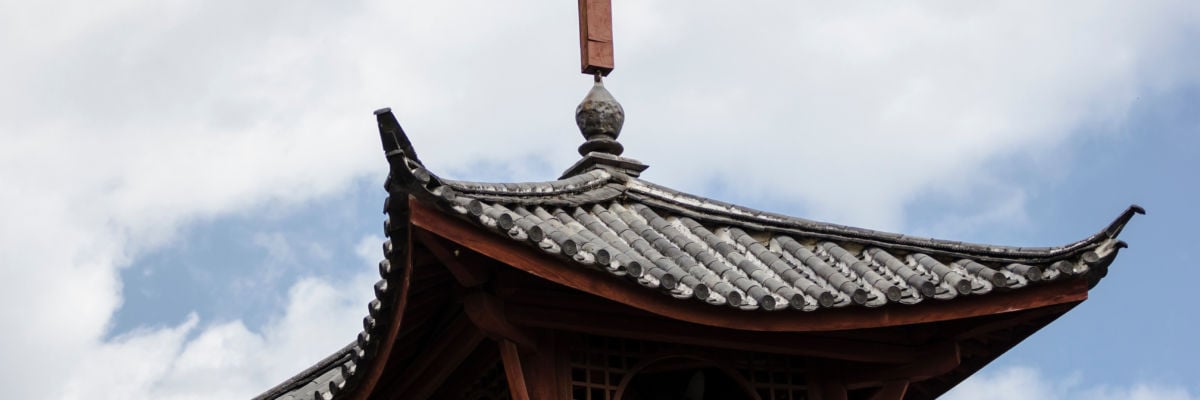
My wife and I lived in Beijing for eight months right after we were married in 2016. Our experience was typical of most Westerners. We were allowed to worship and do Catholic things with limited interference, because we were not viewed as a threat.
Chinese Catholics, on the other hand, face surveillance, bullying, and intimidation. Two Masses we attended and a hidden church we visited stand out as testimonies of faith in the midst of opposition—valuable for us Western Christians, who might take our freedoms and opportunities for granted.
The first Mass was on a wet and cold late fall evening. We hurried to make it in time to the Cathedral of the Immaculate Conception, also called “The South Cathedral,” or “Nantang” in Mandarin, after a long day of touring the city. When we arrived, we were mostly just grateful to sit down to rest our feet. But then my attention was drawn to the inordinate number of security cameras. Pillar after pillar had one, creating an odd contrast with the seventeenth-century architecture. There was hardly any gold to steal; it had already been taken in previous persecutions. I was confused as to why they were on such high alert until a friend explained, “They are government cameras. They can watch everyone who comes in here.”
The homily was all in Mandarin and lasted for an obscenely long thirty, possibly forty minutes. I was exhausted, ravenous, and grumpy. But afterward, I learned that it was illegal for the priest to instruct the children of the parish in the Faith or give them any materials to read. The homily was his only chance to reach them, and he wasn’t going to waste it.
While we lived in Beijing, we were fortunate to visit many other parts of China. My wife had been adopted as an infant from Wuhan (of COVID fame). She had always wanted to visit her native city. Through a series of providential events, we went to Mass Christmas Eve in a church right next door to the orphanage she was adopted from.
Outside, there was a collection of dozens of nativity sets from around the world on display. Inside, the Church was packed, and the indoor creche brought to life that moment in Bethlehem where God turned the tide of human history and gave to us our Savior.
All of this was familiar, and comforting, to any American or Westerner. What was also familiar—but more surprising—was the other characters ready to welcome the newborn King: Frosty the Snowman, Rudolf the Red-nosed Reindeer, and Santa Claus were all there alongside the Blessed Mother, St. Joseph, and the Wise Men.
Why were these secular figures taking up what should be space for sacred art? We learned that many Chinese Catholics see Frosty, Santa, etc. as a part of how free people fully rejoice in the joy of the God-Man coming to Earth. They can’t fathom something being “Christmassy” but not religious.
Our culturally acceptable but rationally bizarre celebrations in America of Christmas without Christ don’t make sense to those who risk the ire of the government to celebrate it. We heard that a year or so before, the police had shown up at another church right before Mass began and barricaded the doors. They informed the distressed families who had not yet gotten inside that “enough people are going to Church today. Go home.”
And thus it was that one of the most beautiful Christmas Masses of my life was in the company of not just the angels, shepherds, and wise men, but also the whole cast of “commercial Christmas” characters. At their best, these figures help heighten our sense of excitement, wonder, and mystery as we prepare for the Nativity. In Wuhan that year, they lived up to that calling in a way I would never have guessed.
The final church experience that particularly struck me was again in Beijing. In the heart of the capital city, there is a district called Wangfujing. It is a bustling hive of traffic and activity. At what looks like the end of one of the main plazas, there is a gargantuan rectangle of an office building. If you walk all the way up to it, however, you realize that the street continues, wrapping awkwardly around and resuming its course on the other side. There you find St. Joseph’s, a Romanesque edifice from the early 1900s, and one of four historic Catholic churches in Beijing. They all suffered the loss of many of their material treasures in the decades that the Chinese Communist Party has run the show, but they are still beautiful and culturally significant. Relatively recently, government officials decided that it was too easy for passersby to see the beautiful, cross tipped spires. In an act of petty vindictiveness, they built a massive block to hide the Church from view unless you deliberately seek it out.
Chinese Catholics are always under the watchful eye of the Chinese Communist Party, or secretly practicing their faith under the radar. The division is not as cut and dried as “underground” being the faithful and “aboveground” being sellouts to the government. The situation—including how Pope Francis had tried to address it—is too complicated to discuss in full here. What is more important to take away is that we Catholics in the United States of America and the West have more freedom, resources, and opportunity than most any people have ever had on the face of this earth. If we fully took advantage of these and used them to spread the gospel, how many souls would we bring to Jesus?
If we were half as willing to face the social media mobs and snickers behind our back as those in China are to face government intimidation, surveillance, and bullying, how much holier would our nation be?
My heart is filled with gratitude for the many ways God has blessed us in the West. I am also grateful for how he has provided for the many wonderful Chinese Catholics who do far more with far less under persecution. I am so grateful for the joyful and persistent brothers and sisters in Christ who remain faithful in the midst of so much uncertainty and opposition. May their witness be a way God inspires us to take up our crosses and follow him.



